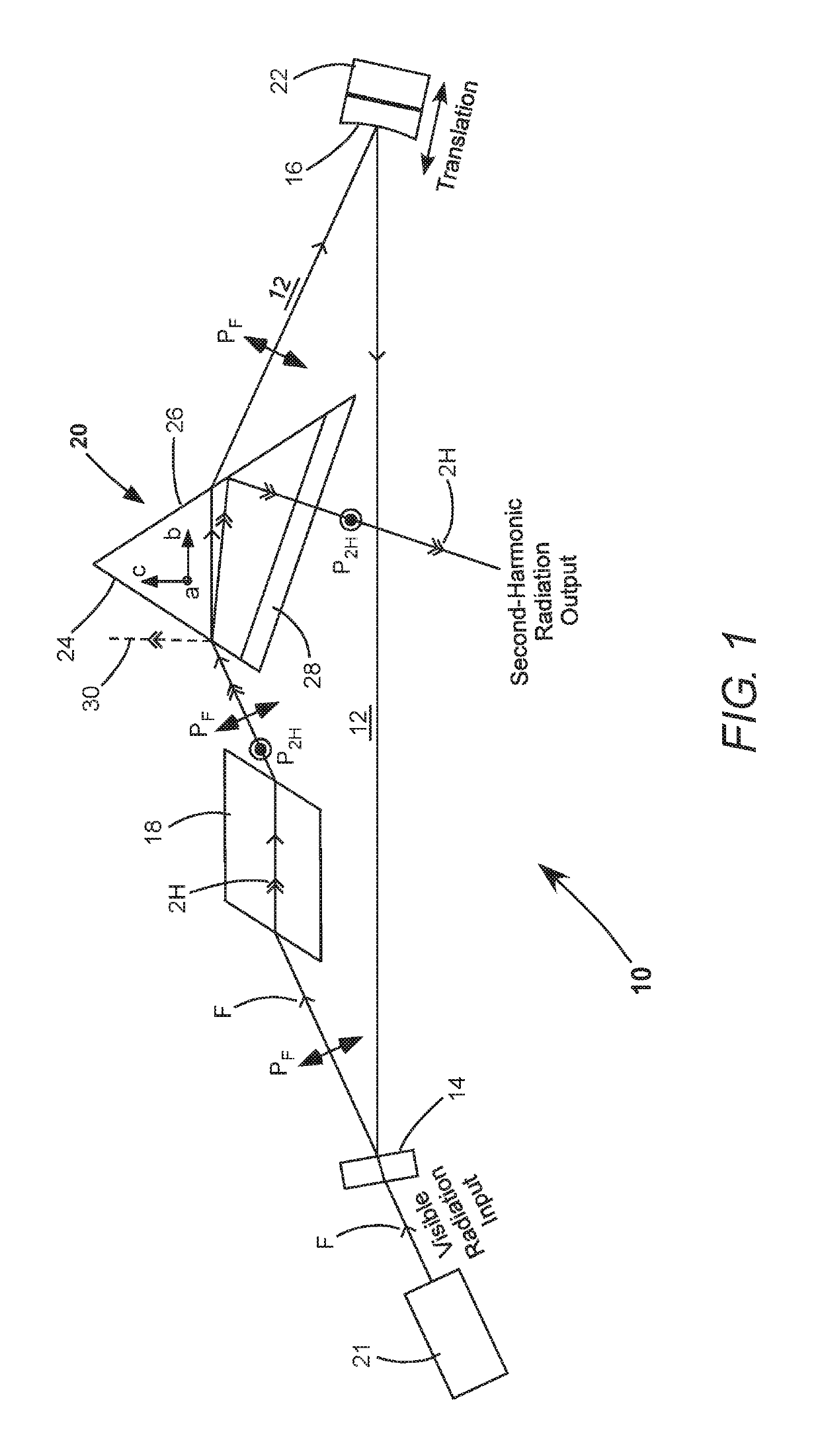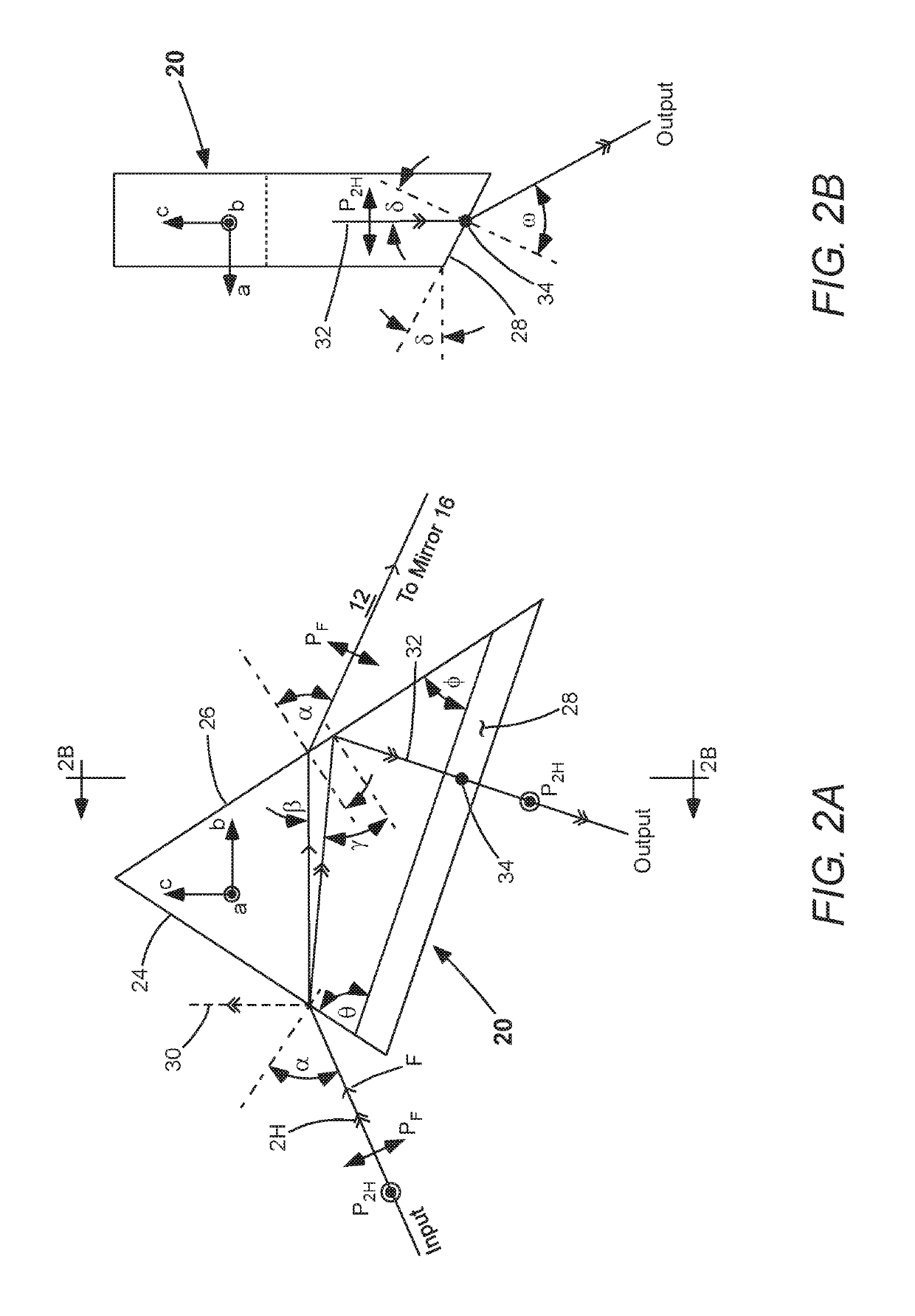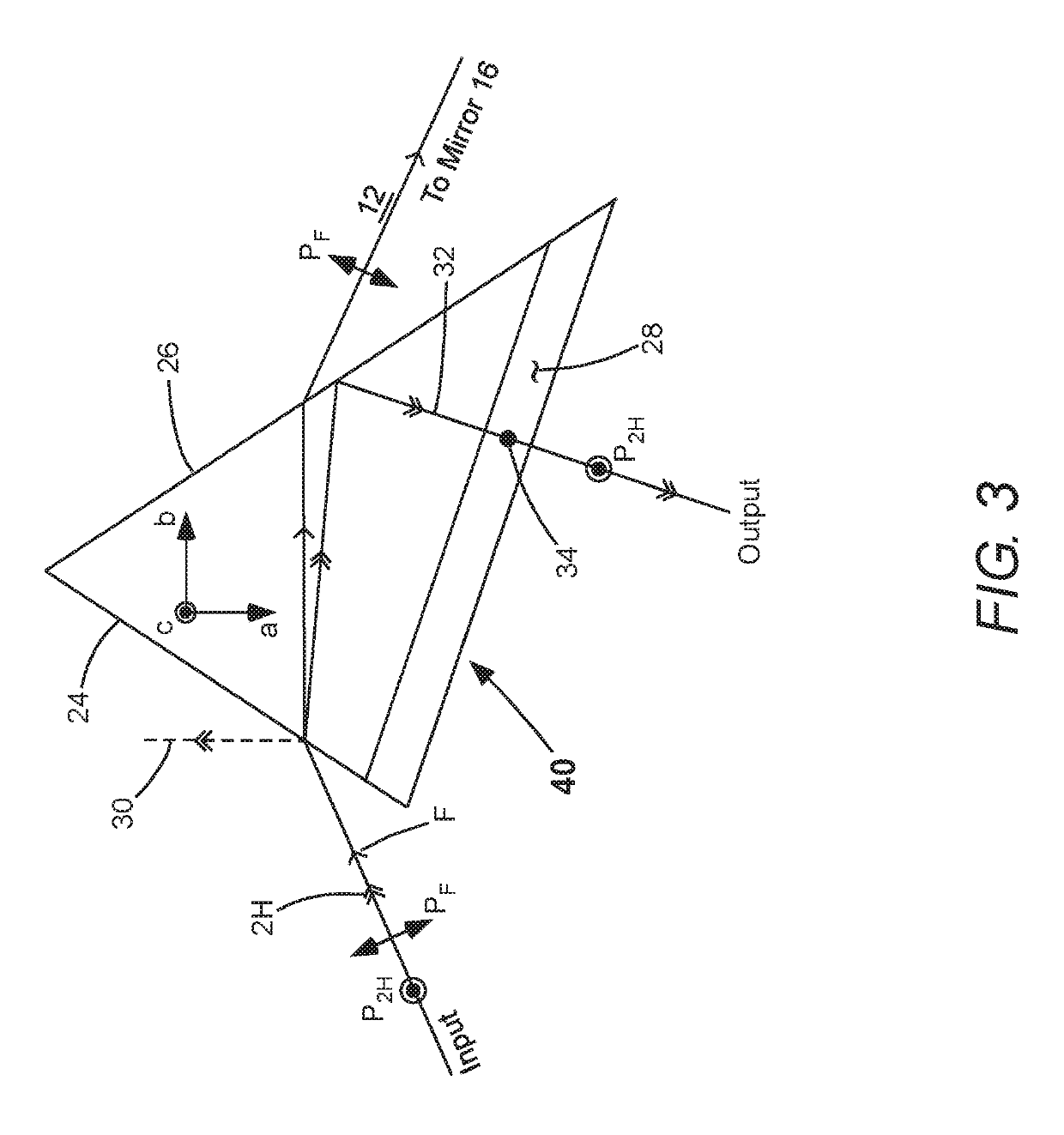Birefringent prism for wavelength separation
a wavelength separation and birefringent technology, applied in the field of optical elements for separating radiation, can solve the problems of reducing the sensitivity of the birefringent prism, causing damage to the thin-film optical coating, and limiting the effect of shorter-wavelength uv radiation, so as to achieve the effect of reducing the sensitivity of the birefringent coating and reducing the birefringent coating
- Summary
- Abstract
- Description
- Claims
- Application Information
AI Technical Summary
Benefits of technology
Problems solved by technology
Method used
Image
Examples
Embodiment Construction
[0012]Turning now to the drawings, FIG. 1 schematically illustrates a preferred embodiment 10 of optical apparatus in accordance with the present invention. Apparatus 10 includes an optical resonator 12, which is configured as an enhancement resonator for harmonic conversion. Resonator 12 is a unidirectional ring-resonator formed by a plane mirror 14, a concave mirror 16, a Brewster-cut optically nonlinear crystal 18, and an uncoated birefringent out-coupling prism 20 in accordance with the present invention.
[0013]Visible wavelength radiation “F” is coupled into resonator 12 through mirror 14. The visible wavelength radiation is designated hereinafter as the “fundamental radiation”, for convenience of description. A source 21 of the fundamental radiation may generate the fundamental radiation by harmonic conversion of NIR radiation, as discussed above. By way of example, source 21 could be a diode-pumped OPS laser generating a beam of laser-radiation. The beam path of the fundamenta...
PUM
| Property | Measurement | Unit |
|---|---|---|
| wavelength | aaaaa | aaaaa |
| wavelength | aaaaa | aaaaa |
| Brewster angle | aaaaa | aaaaa |
Abstract
Description
Claims
Application Information
 Login to View More
Login to View More - R&D
- Intellectual Property
- Life Sciences
- Materials
- Tech Scout
- Unparalleled Data Quality
- Higher Quality Content
- 60% Fewer Hallucinations
Browse by: Latest US Patents, China's latest patents, Technical Efficacy Thesaurus, Application Domain, Technology Topic, Popular Technical Reports.
© 2025 PatSnap. All rights reserved.Legal|Privacy policy|Modern Slavery Act Transparency Statement|Sitemap|About US| Contact US: help@patsnap.com



